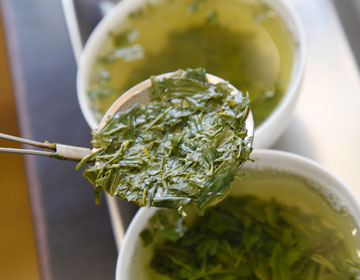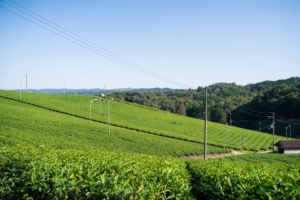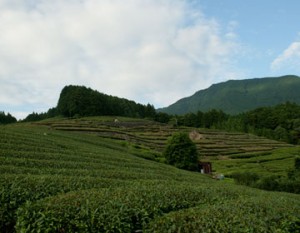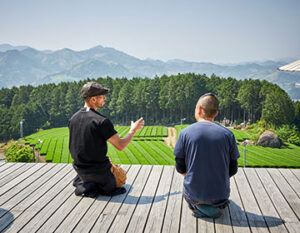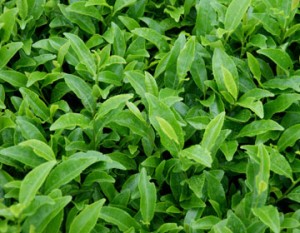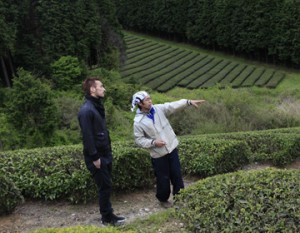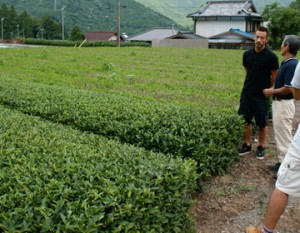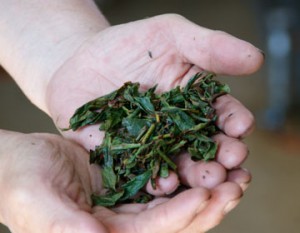Establishing the standard for ”supreme” quality

”Kikicha” determines the variety, origin and quality of tea leaves by looking at the color or the shape of the tea leaves and examining the color, aroma and the taste of the tea.
Fumio Maeda is known as the ”kikicha” master among all tea masters.
After being in the tea business for only 2 years, he entered a national contest for the National Tea Technology Competition. He placed 10th place in his first competition, earning ”rokudan” (6th level) certification. At the competition held in 1997, his performance earned him a score that would place him above the highest existing rank of ”kyudan” (9th level). An emergency meeting of the council was held where they established a new ”judan” (10th level). It is now said that ”judan” was created just for Maeda.
When we visited Maeda’s company, they served us cold green tea.
”I really prefer green tea these days.” Nakata commented.
We learned the basics about tea, which is such a familiar part of our lives, yet we knew so little about it.
”Blending” to make better tea
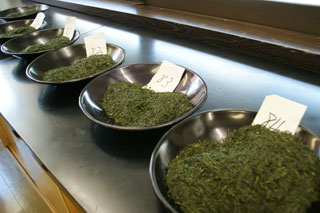
There are green tea blends. This technique is called ”gogumi”.
By blending several kinds of tea leaves, the aroma, sweetness, bitterness and astringency can be balanced, bringing out a deeper flavor. The leaves are blended to make better tasting tea.
Maeda specializes in this. He blends using his ability to differentiate aroma, and his extensive knowledge about tea.
Maeda asked Nakata to try, and Nakata accepted the challenge.
Combining tea leaves from Miyazaki, Kochi and Shizuoka to make 100g of blended tea. Each tea has a clearly distinct taste.
The result is ”an aromatic tea with impact”, according to Maeda.
”This is interesting. And it’s quite good too.” Maeda said, but Nakata admitted ruefully, ”I wanted it to be little milder.
The best balance of bitterness, astringency, sweetness and aroma is at 70 degrees
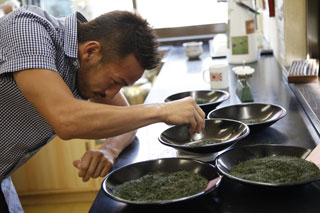
At the end Nakata asked, ”How do you brew a delicious pot of tea?”
Maeda said, ”70 degrees is the best temperature to drink tea. 70 degrees is where bitterness, astringency, sweetness and aroma harmonize.”
”However, there are individual preferences. It’s best for people to find their own temperature, as well as the amount of tea leaves that they like.”
Tea is a Shizuoka specialty, but It’s also produced in various parts of Japan, each with its own uniqueness.
This also is one of the big attractions of Japan. The visit inspired us to treasure each pot of tea we brewed.



